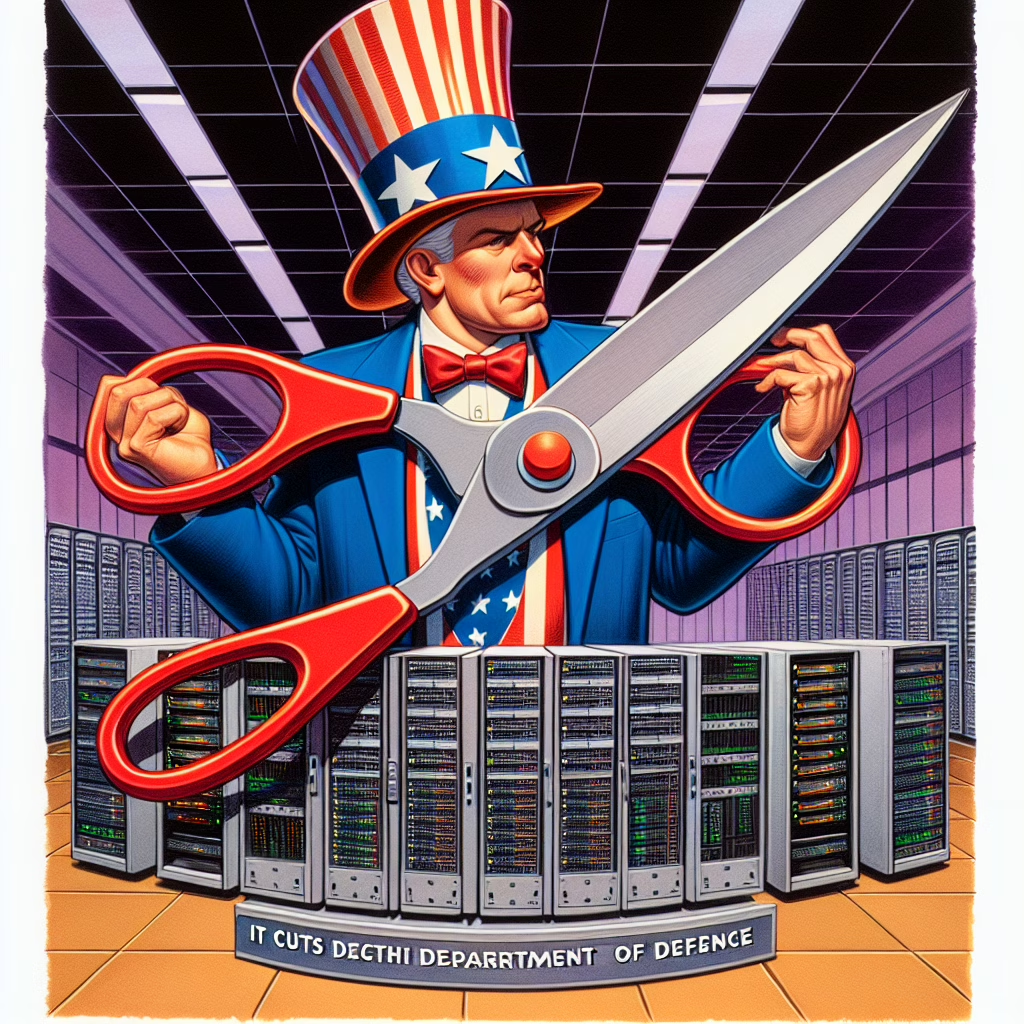In a delightful twist of fate, the US government has recently donned its superhero cape, hailing IT cuts as a pivotal part of a billion-dollar savings plan for the Department of Defense (DoD). Yes, you heard that right! The government is not just trimming the fat; it’s going on a full-blown diet while flexing its fiscal muscles. Who knew that cutting back could be so rewarding?
IT Cuts: A New Age of Efficiency
The Department of Defense has embarked on an ambitious journey to streamline operations and bolster efficiency through significant IT cuts. This isn’t just about slashing budgets willy-nilly; it’s a strategic move aimed at reallocating resources to where they matter most. Think of it as decluttering your digital workspace, except instead of tossing out old papers, we’re talking about outdated technologies and unnecessary expenses.
By embracing modern solutions and optimizing existing resources, the DoD aims to save an impressive $1 billion. Now that’s a number that can make even Scrooge McDuck raise an eyebrow! These savings will not only enhance operational capabilities but also ensure that taxpayer dollars are spent more wisely. Isn’t it nice to see our government making smart choices?
The Silver Lining of IT Cuts
Now, let’s address the elephant in the room: what happens when you cut IT budgets? Do we end up in a technological dystopia where emails take weeks to send? Not quite! In fact, these IT cuts will likely lead to the opposite effect. By focusing on essential technologies and eliminating redundancies, the DoD can invest in innovative solutions that drive performance.
- Enhanced Connectivity: Expect faster communications and more reliable data sharing.
- Streamlined Operations: With less clutter, processes will become smoother and more effective.
- Increased Agility: Emphasis on modern systems means quicker responses to changing needs.
Imagine this: instead of struggling with outdated systems, military personnel will have access to state-of-the-art technology that enhances their capabilities. It’s like upgrading from a flip phone to the latest smartphone—suddenly, everything is faster, smoother, and way more fun!
A Culture Shift in Government Spending
This transformation isn’t merely about numbers on a balance sheet; it represents a cultural shift within the government. For years, inefficiencies have plagued various departments like an unwelcome guest at a party. But now, with these IT cuts paving the way for smarter spending habits, we can expect to see a ripple effect across other sectors as well.
Other government agencies might just take notes and follow suit. Why not? If one department can save billions through strategic cuts while simultaneously improving services, perhaps it’s time for others to step up their game. Talk about setting a trend!
Innovation Through Necessity
The DoD’s commitment to innovation is truly commendable. By reallocating funds from traditional IT infrastructures to more agile platforms and cutting-edge technologies, we’re witnessing a shift towards what some might call “innovation through necessity.” This means that challenges can spur creativity and lead to groundbreaking solutions.
In an era where technology evolves at lightning speed, staying ahead of the curve is essential. The DoD seems ready to embrace this challenge head-on by investing in modern tools that not only enhance military effectiveness but also ensure national security remains robust.
Looking Ahead: What’s Next?
As we gaze into the crystal ball of government spending, it’s clear that these IT cuts may just be the beginning of something greater. With ongoing evaluations and adjustments, we could see even more areas ripe for innovation and improvement. Who knows? Maybe next year we’ll witness further budgetary miracles that would make even the most seasoned financial analysts blush.
For now, let’s celebrate this savvy move towards fiscal responsibility while keeping our fingers crossed for more smart initiatives in the pipeline. After all, if the government can save money while making life easier for its employees and citizens alike, isn’t that something worth cheering about?
What are your thoughts on these IT cuts and their potential impact on government efficiency? We’d love to hear from you! Share your opinions in the comments below!
A big thank you to TechRadar for providing such insightful content that inspires discussions around smart government spending.

